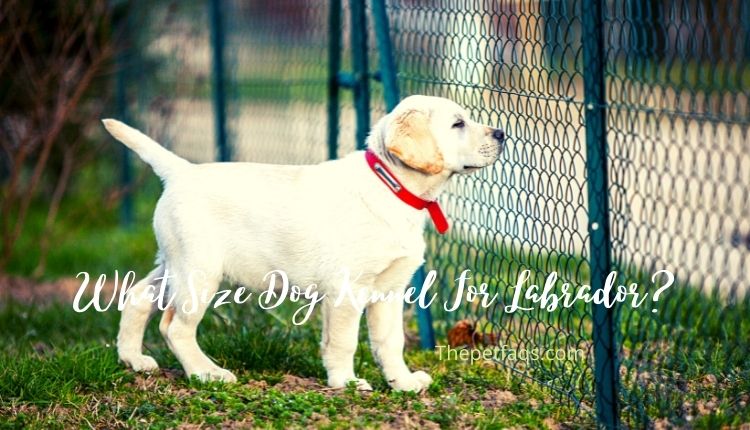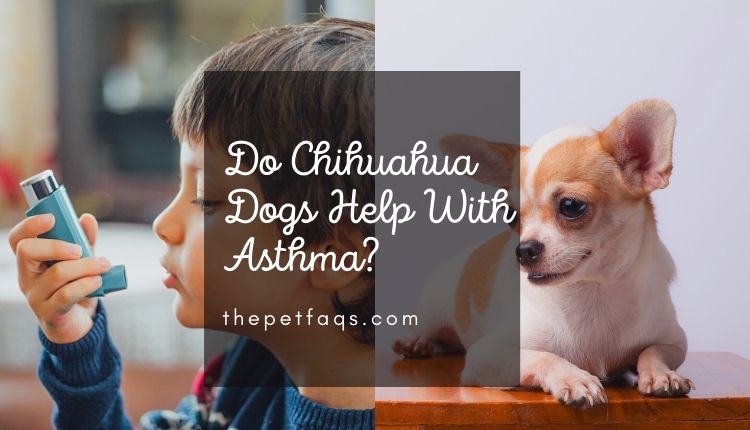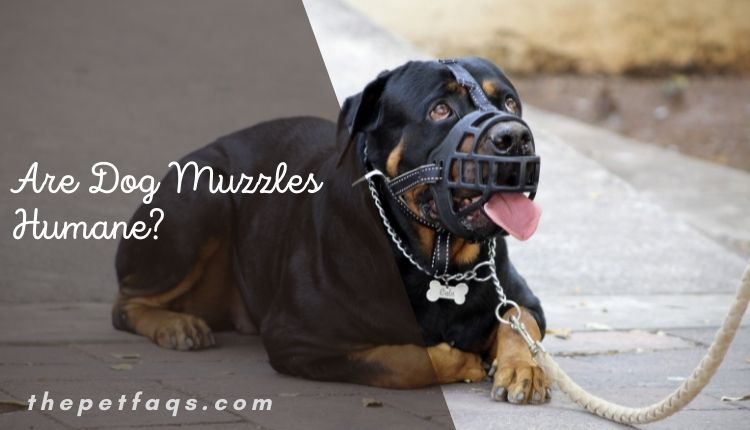Are Regular Tennis Balls Ok For Dogs?
Most of us would have both owned a dog and a tennis ball for our pets. But are regular tennis balls ok for dogs? The truth is, there are pros and cons to using tennis balls for dogs. On the one hand, tennis balls are a great way to occupy dogs when you can’t be present.
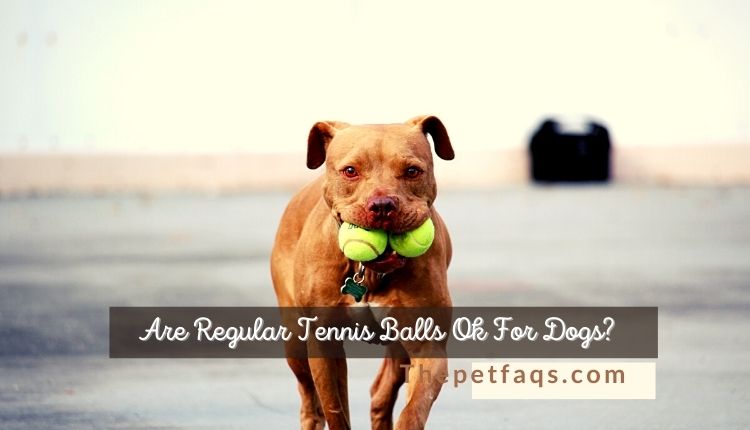
Moreover, tennis balls are also a favorite toy choice for many pets and give them physical and mental exercise. However, regular tennis balls may cause some issues too. For example, tennis balls can be damaging for your dog if she swallows them or if she gets it stuck in her throat and starts choking.
What’s safer: a tennis ball or a ball made specifically for dogs?
In itself, a tennis ball won’t harm your dog. However, if it gets in their stomach and blocks the dog’s airway (because of the way they are shaped), it can cause serious issues for dogs that swallow or choke on balls like these ones. And if you take away one from your pet’s toy box, she may get very excited when she sees others of the same size… And that’s a recipe for disaster.
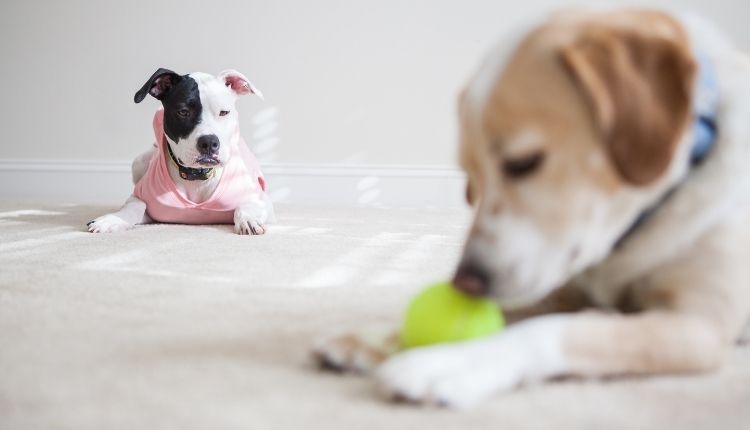
In conclusion, if dogs have a toy box filled with tennis balls and also other toys they can pick from, then it may be all fine as long as you’re sure to remove the dog’s selection at times. If not, this could lead to choking issues or even digestive complications (bile acid build-up in your pet), which don’t sound good at all!
A tennis ball will damage your active dog’s teeth: truth or fiction?
Many people have this misconception that if you give a dog an active and healthy life, such as running around, playing games together, for instance, or even roughhousing – somehow and without fail – their teeth will get worn down. Unfortunately, this is definitely not the case!
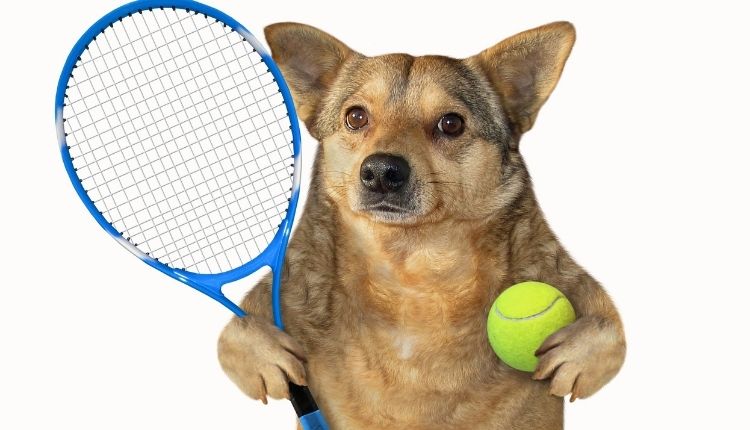
There are several reasons for things like your sports-loving friend’s incredible jaw muscles to shock most of us at regular visits to the vet: what he chews on ( nuts, bones, or other hard, crunchy treats), how often he chews on it, and the susceptibility of his dentition to wear down. Another factor is what kind of food your dog carries out with him when going for a run.
Even if those muscles seem at first glance quite impressive, in fact, they can be doing nothing more than abrading their own teeth! Of course, chewing may also damage canine teeth during cleaning (and don’t forget that for every nut or bone with a crunchy texture you leave the other end of your pet’s jaw, a tooth remains unharmed).
what can we do when our Wags arrive home panting and smelling like his next meal?
Unfortunately, there is always only one option: prevention. However, gently but consistently supervise him while he eats and keep an eye on things! Perhaps change to harder (meat) snacks following light snacks included in his regular diet, or let him play with other dogs.
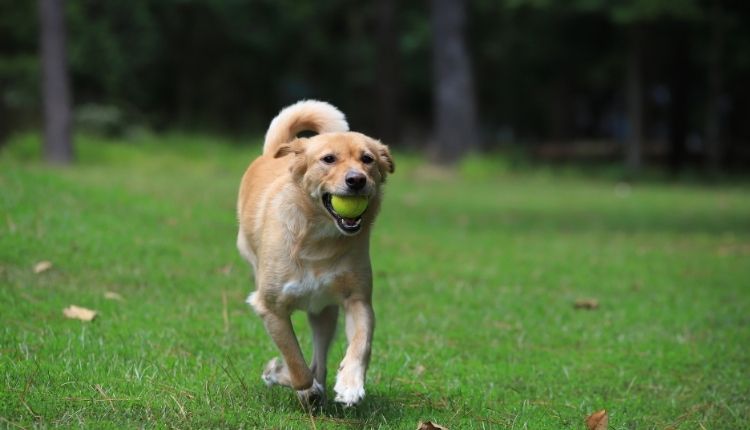
What about using balls specially made for dogs? Aren’t they safer?
Chances are that you have a bone to grind. Asking this question could lead someone – even if they know an absolute fool when they see one – to constantly refer back and forth between the possibility of all materials being harmless, dangerous, or in some way hazardous, while dismissing as futile any particular fact provided by anyone else professionally qualified in their field.
These then are questions that require looking at each individual case individually:
- How old your dog is.
- What is that animal’s weight?
- How easy or difficult the mechanics of moving from one place to another maybe.
Does your dog eat at the same time each day?
If so, feel free. For example, your little puppy probably doesn’t have as strong jaws and teeth as an established adult dog.
These also act differently around food with a crunchy texture that could quickly remove smaller elements when you brush off larger ones (exposed through tearing). Remember that our dogs have evolved to eat more quickly when given a taste of bigger and crunchier prey when they do not have time to chew it all.
Also, keep an eye on packaging materials, especially plastic ones, as this ends up being one of the most damaging for us. Fluidized petroleum jelly – grease/special oil meant for electronic equipment – and “minty” flavored items, even though they might seem harmless, are very hazardous for pets.
In short, it’s easy but still necessary to be able to rely on your dog’s awareness that a treat isn’t as dangerous so much as being a completely non-sensible treat which can shape the way they deal with life:
when we take them out more often and give them hours of fun in our company these become happier creatures who show us their gratitude – something like those beautiful moments you capture while taking pictures of children.
Thoughts on “What’s safer: a tennis ball, or a ball made specifically for dogs?”
The tennis ball is a great first toy for your dog, but it’s not going to last forever. Barkman says you should switch every 3 months because the bristles “will get really sharp.
” Some dogs will just skip this step and tear up their toy when bored. Others like chewing on new things to chew off dead parts of their toys (again, after three months’ attention–new tennis balls smell good, according to many people).
If you can let their toys get near ‘used,’ that’s preferable to new ones. If your dog is a chewer and can carry things without something ripping it off due to its weight, try bigger balls.
Heavier objects are more difficult for dogs with powerful jaws, so if your dog doesn’t have issues carrying them, then don’t make fun of him–it could actually take strength from him in his future life as he speeds and keeps up with large dogs.
Suppose you’re considering a ball for exercise. In that case, it may be worth testing out the following expressions from your dog during play: “ball” happy expression good choice.
Barkman also says to avoid putting balls twice in one piece or of an excessive kind which is basically an unnecessary complication for an already complicated and dangerous situation (the assumption behind this bit is that our dog won’t leave ANYTHING around if we make it easy for them).
I’ve chosen to say that balls might not be best because if you have multiple dogs in your house, one may get ahold of the ball and swipe it out of another’s hands.
Conclusion:
A supply of balls should be available for your dog to test out. If a dog has zero interest in toys, it might not matter what you put in front of him.
Still, each day is another opportunity to introduce something new and different (be sure to look at the ‘guidelines’ before doing so). Playroom seats may seem like they’d just add more work yet again–no thanks!
I don’t want my dogs feeling forced into something (or not doing it). As far as preventative measures go, from a safety standpoint, I’d have to say ‘never force your dog into anything.’
Providing a ball choice and the ability for Fido to exercise doing that might be just all you need, though, so try it out!


